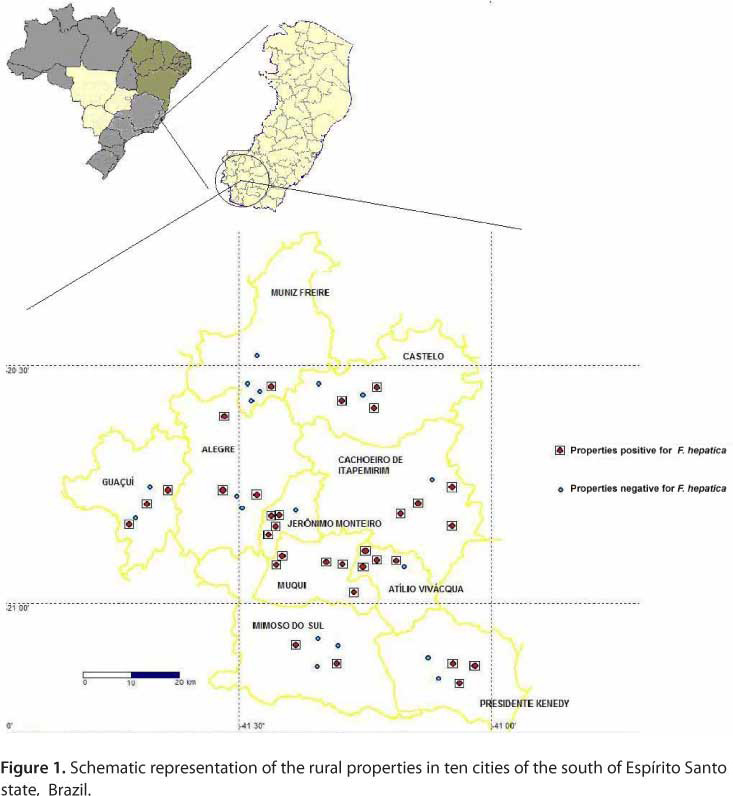Fasciolosis is a disease that affects the liver parenchyma and bile ducts of numerous animals, including humans, which causes economic losses and threatens public health. The present work aimed at reporting the distribution and factors connected with Fasciola hepatica infection in cattle in ten municipalities in southern Espírito Santo, Brazil, between 2008 and 2009. During this period, 50 rural properties in ten cities were analyzed and fecal samples from 10% of the cattle on each farm were collected. Of the 717 samples analyzed, 154 (21.33%) presented Fasciola hepatica eggs. As for the 50 rural properties studied, 32 (64%) had animals positive for fasciolosis. Throughout the evaluation, it was observed that 42 (84%) rural properties had flooded areas, 33 (66%) were located at altitudes less than 226 meters, in 36 (72%) mollusks were found, 47 (94%) had other definitive hosts (horses, sheep, goats) and 25 (50%) had previous cases of bovine fasciolosis. The present results showed a high rate of bovine fasciolosis in the analyzed region whereas infected animals are present in all the municipalities. Based on statistical analysis, it was concluded that there was an association between the presence of flooded areas and other definitive hosts in rural properties where bovine fasciolosis was detected.
fasciolosis; epidemiology; ruminants


